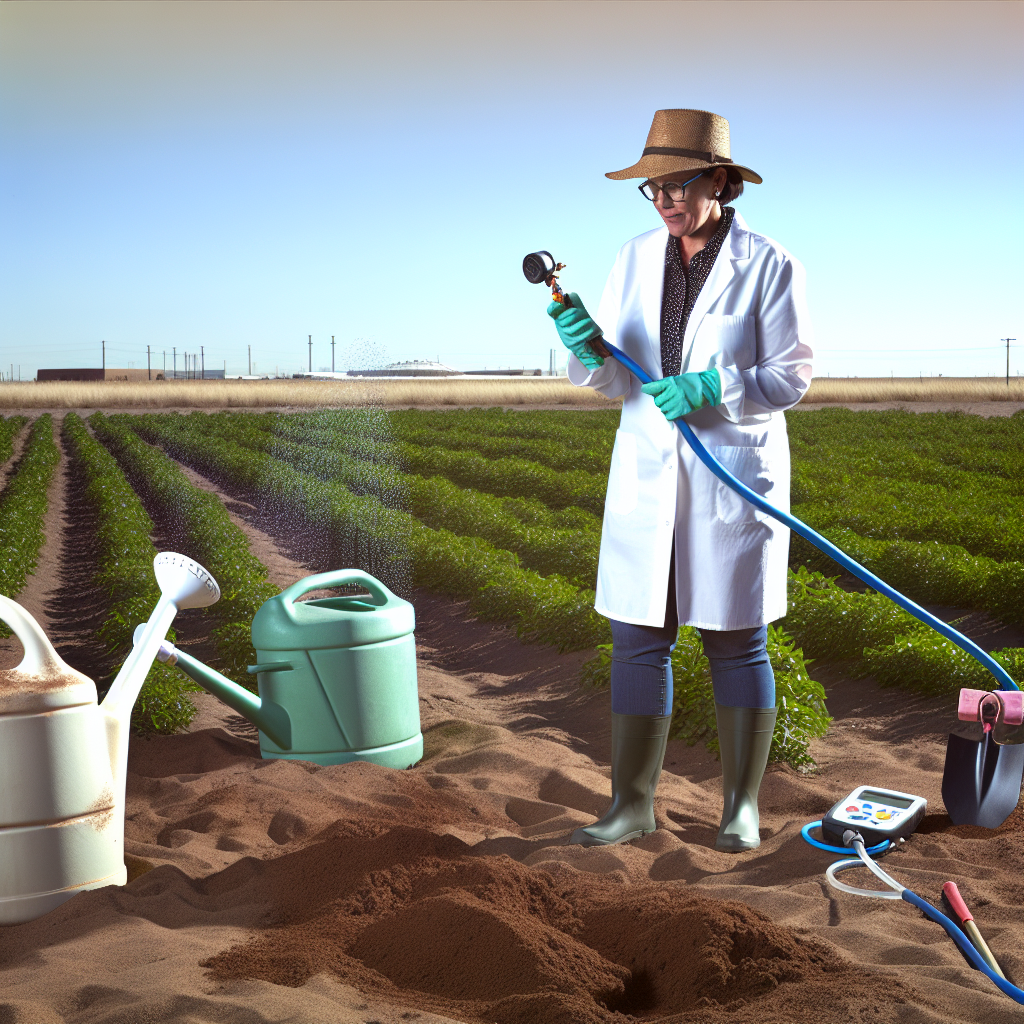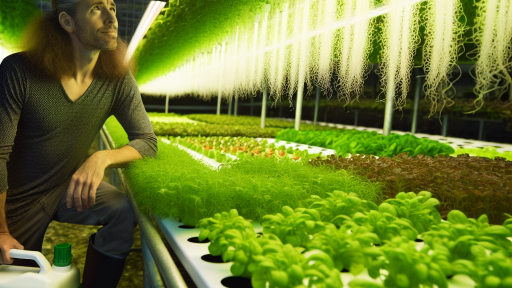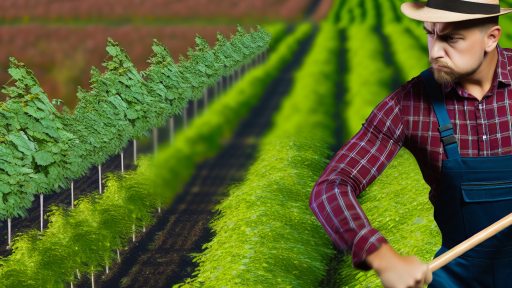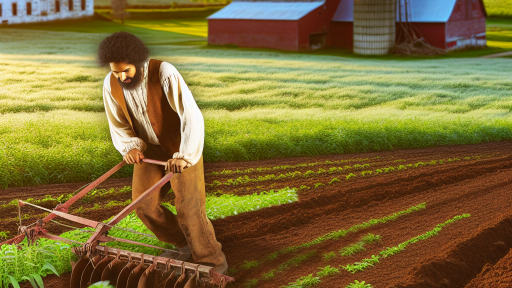Introduction to Water Management in Agriculture
Effective water management is crucial for sustainable agriculture.
It directly impacts soil health and crop productivity.
Farmers face challenges such as water scarcity and erratic rainfall.
Thus, they must employ strategies to optimize water use.
Importance of Water in Soil Management
Water plays a vital role in soil structure and fertility.
It facilitates nutrient absorption by plant roots.
Moreover, adequate moisture supports microbial activity in the soil.
Challenges in Water Management
Farmers encounter various challenges related to water management.
These include drought conditions and flooding risks.
In addition, improper irrigation can lead to soil salinization.
Addressing these issues requires innovative techniques.
Strategies for Effective Water Management
Several effective strategies can enhance water management.
For instance, rainwater harvesting captures runoff for later use.
Drip irrigation delivers water directly to plant roots.
Additionally, mulching retains moisture and reduces evaporation.
Transform Your Agribusiness
Unlock your farm's potential with expert advice tailored to your needs. Get actionable steps that drive real results.
Get StartedCrop rotation can improve soil structure and water retention.
Adopting Technology in Water Management
Technology plays a significant role in water conservation.
Smart irrigation systems utilize sensors for efficient watering.
Remote monitoring helps farmers assess soil moisture levels.
Such tools improve decision-making and resource management.
Benefits of Proper Water Management Techniques
Implementing sound water management practices provides multiple benefits.
It enhances soil health and increases crop yields.
Furthermore, it reduces water waste, promoting sustainability.
Ultimately, these practices contribute to food security.
Importance of Healthy Soil for Crop Production
Foundation of Crop Growth
Healthy soil serves as the foundation for crop growth.
It contains essential nutrients required by plants.
Moreover, soil acts as a reservoir for water, ensuring plant survival.
Supporting Biodiversity
Healthy soil promotes microbial activity.
This microbial diversity enhances nutrient cycling.
Additionally, diverse soil life improves plant resilience against pests.
Enhancing Soil Structure
Good soil management fosters proper soil structure.
A better structure improves water infiltration rates.
It also reduces erosion risks, safeguarding valuable topsoil.
Increasing Crop Yields
Healthy soil directly influences crop yields.
It supports robust root systems, maximizing nutrient uptake.
As a result, farmers can enjoy higher productivity levels.
Environmental Sustainability
Focusing on soil health contributes to environmental sustainability.
Healthy soils help sequester carbon, mitigating climate change.
Thus, enhancing soil health supports larger ecological systems.
Showcase Your Farming Business
Publish your professional farming services profile on our blog for a one-time fee of $200 and reach a dedicated audience of farmers and agribusiness owners.
Publish Your ProfileTypes of Water Management Techniques
Rainwater Harvesting
Rainwater harvesting collects rain for later use.
This technique reduces dependency on traditional water sources.
It captures runoff from roofs and other surfaces.
Then, it stores water in tanks or underground pits.
Farmers can utilize this water for irrigation.
Moreover, it helps conserve groundwater resources.
Drip Irrigation
Drip irrigation delivers water directly to plant roots.
This method minimizes water waste and evaporation.
It is particularly suitable for arid regions.
Farmers can save significant amounts of water using this technique.
Additionally, it promotes healthy plant growth.
Regular maintenance ensures optimal performance.
Soil Moisture Monitoring
Soil moisture monitoring uses technology to track water levels.
This technique helps manage irrigation effectively.
Farmers can apply water only when necessary.
Consequently, this practice conserves water and enhances soil health.
Various tools are available for monitoring moisture content.
Investing in technology can lead to better management practices.
Constructed Wetlands
Constructed wetlands mimic natural wetlands for water treatment.
They filter pollutants and improve water quality.
This technique also enhances biodiversity.
Moreover, it can manage stormwater runoff effectively.
Constructed wetlands support various plant and animal species.
They serve as vital ecosystems while managing water resources.
Soil Conservation Practices
Soil conservation practices protect and enhance soil structure.
Methods include cover cropping and crop rotation.
These techniques improve soil moisture retention.
They also prevent erosion and nutrient loss.
Practicing good soil conservation promotes sustainability.
Healthy soil contributes to overall water management strategies.
Delve into the Subject: Integrated Pest Management for Organic Farming
Irrigation Methods
Drip Irrigation
Drip irrigation delivers water directly to the plant roots.
This method minimizes evaporation and runoff.
It uses a system of tubes, valves, and emitters.
Farmers can control the amount of water each plant receives.
This technique promotes efficient water usage.
Additionally, it reduces weed growth by limiting water on soil surface.
Sprinkler Irrigation
Sprinkler irrigation simulates natural rainfall.
It distributes water through a system of pipes and sprinkler heads.
This method is suitable for large fields and various crops.
Showcase Your Farming Business
Publish your professional farming services profile on our blog for a one-time fee of $200 and reach a dedicated audience of farmers and agribusiness owners.
Publish Your ProfileFarmers can adjust the spray pattern and timing easily.
Moreover, it can be automated for optimal efficiency.
However, it may result in water loss due to evaporation and wind.
Surface Irrigation
Surface irrigation involves applying water directly to the soil surface.
This method can be done using furrows, basins, or flood techniques.
It is simple and cost-effective for farmers.
Surface irrigation is best for flat landscapes with adequate soil infiltration.
However, it can lead to uneven water distribution if not managed well.
To improve efficiency, farmers should consider soil moisture levels.
Choosing the Right Method
Selecting the appropriate irrigation method requires assessing several factors.
Factors include crop types, soil characteristics, and climate conditions.
For instance, drip irrigation works well for high-value crops.
In contrast, surface irrigation may be better for larger, low-value crops.
Ultimately, the goal is to enhance soil health and productivity.
See Related Content: Implementing Crop Diversity for Sustainable Farming
Rainwater Harvesting and Its Role in Soil Health
Introduction to Rainwater Harvesting
Rainwater harvesting captures and utilizes rain for irrigation and other uses.
This practice is beneficial for sustainable water management.
Additionally, it provides an eco-friendly alternative to conventional water supply methods.
Benefits of Rainwater Harvesting for Soil Health
Harvesting rainwater nourishes the soil with essential nutrients.
It helps maintain soil moisture levels, especially during dry spells.
This technique reduces reliance on chemical fertilizers, promoting healthier ecosystems.
Furthermore, it fosters better crop growth and resilience.
Methods of Rainwater Harvesting
Multiple methods facilitate effective rainwater harvesting.
- Direct collection from rooftops through gutters and downspouts.
- Construction of rain gardens that absorb runoff.
- Installation of cisterns for storage and distribution.
Implementation Strategies
Effective rainwater harvesting requires careful planning and execution.
First, assess the area and potential rainwater catchment locations.
Next, select the right systems and materials for your needs.
It is also crucial to consider local regulations and best practices.
Challenges and Considerations
Despite its benefits, rainwater harvesting presents challenges.
These include initial setup costs and maintenance requirements.
Additionally, ensuring water quality is essential for safety.
Implementing effective filtration and treatment systems can alleviate these concerns.
Future of Rainwater Harvesting in Agriculture
As climate change progresses, rainwater harvesting will gain importance.
Farmers will increasingly adopt this technique for sustainable practices.
Moreover, advancements in technology will enhance harvesting methods.
This will contribute to better soil health and agricultural productivity.
Discover More: Conservation Tillage Strategies For Crop Success
Soil Moisture Monitoring and Management Systems
Importance of Soil Moisture
Soil moisture plays a crucial role in plant health.
It affects nutrient availability, root development, and overall growth.
Moreover, proper moisture levels can prevent soil erosion.
So, monitoring soil moisture is essential for effective agriculture.
Showcase Your Farming Business
Publish your professional farming services profile on our blog for a one-time fee of $200 and reach a dedicated audience of farmers and agribusiness owners.
Publish Your ProfileTypes of Soil Moisture Monitoring Systems
Various systems help farmers monitor soil moisture effectively.
One common system involves soil moisture sensors.
These sensors provide real-time data on moisture levels.
Another option is utilizing weather stations for moisture analysis.
This method combines climatic data with soil information.
Soil Moisture Sensors
Soil moisture sensors are widely used in agriculture.
They can measure moisture at different soil depths.
These sensors can be installed in various types of soil.
Moreover, they can connect to mobile devices for easy monitoring.
Weather Stations
Weather stations collect data on precipitation and temperature.
Farmers can use this information to analyze soil moisture trends.
Additionally, they help predict irrigation needs accurately.
Techniques for Managing Soil Moisture
Several techniques exist to effectively manage soil moisture levels.
One effective method is drip irrigation.
This system delivers water directly to plant roots.
It minimizes water waste while maximizing efficiency.
Irrigation Scheduling
Irrigation scheduling relies on moisture data for timing.
Farmers can water crops only when needed.
This method conserves water and improves crop yields.
Soil Amendments
Soil amendments enhance moisture retention in the soil.
Organic materials like compost increase water-holding capacity.
Mulching with organic matter also reduces evaporation.
Benefits of Monitoring and Managing Soil Moisture
Effective moisture management leads to numerous benefits.
It promotes healthier crops, resulting in increased yields.
Moreover, it conserves water resources significantly.
Thus, these systems contribute to sustainable agriculture.
Find Out More: Enhancing Farm Efficiency with Waste Management

Integrating Cover Crops for Improved Water Retention
Benefits of Cover Crops
Cover crops play a crucial role in soil health.
They enhance water retention effectively.
Moreover, they reduce soil erosion.
This practice improves soil structure over time.
Additionally, cover crops increase organic matter in the soil.
Types of Cover Crops
Various cover crops offer distinct advantages.
Legumes like clover and vetch add nitrogen to the soil.
Cereal rye provides excellent ground cover.
Mustard crops can suppress weeds effectively.
Mixing different species can maximize benefits.
Planting and Management Techniques
Proper timing is essential for planting cover crops.
Plant them after the main crop harvest.
This allows crops to establish before winter.
Showcase Your Farming Business
Publish your professional farming services profile on our blog for a one-time fee of $200 and reach a dedicated audience of farmers and agribusiness owners.
Publish Your ProfileManage cover crops by mowing or terminating them before planting the next crop.
Using no-till practices can also enhance effectiveness.
Measuring Success
Evaluate water retention through soil moisture measurements.
Observe changes in plant health and growth rates.
Additionally, monitor soil erosion levels.
Collect data over several seasons for accurate assessment.
This information helps refine cover cropping strategies.
The Impact of Mulching on Soil Moisture and Quality
Understanding Mulching Practices
Mulching involves covering soil with organic or inorganic materials.
This technique enhances soil preservation and improves its quality.
Farmers often use mulch to regulate soil temperature effectively.
Moreover, it reduces evaporation, helping to retain moisture.
Effects on Soil Moisture
Mulching significantly impacts soil moisture levels.
It acts as a barrier against harsh sunlight.
This barrier helps reduce water loss through evaporation.
Consequently, crops can access more water during dry spells.
Additionally, mulches absorb rainfall and slowly release water.
Enhancing Soil Quality
Mulching not only conserves moisture but also improves soil structure.
As organic mulches decompose, they enrich the soil with nutrients.
These nutrients support microbial activity essential for soil health.
Furthermore, mulch helps suppress weed growth effectively.
By reducing competition, it promotes healthier plant growth.
Types of Mulch
There are several types of mulch available to farmers.
- Organic mulch includes straw, wood chips, and leaves.
- Inorganic mulch can be made from plastic or gravel.
Each type has unique benefits for soil management.
Best Practices for Applying Mulch
Applying mulch correctly can maximize its benefits.
Firstly, ensure an even layer of mulch between two to four inches thick.
A thicker layer may hinder water penetration, which can be problematic.
Moreover, regularly check for decaying organic mulch.
This practice ensures continuous nutrient supply and moisture retention.
Best Practices for Water Management in Different Soil Types
Sandy Soil Management
Sandy soils drain quickly and retain less moisture.
To address this, it’s vital to incorporate organic matter.
Adding compost improves water retention significantly.
Additionally, mulch can reduce evaporation and keep soils cooler.
Implementing drip irrigation targets root zones effectively.
Clay Soil Management
Clay soils have high water retention but can become compacted.
Start by alleviating compaction through aeration techniques.
Incorporating gypsum can enhance drainage in clay soils.
Regularly adding organic matter promotes soil structure improvement.
Using raised beds helps control water levels more effectively.
Silty Soil Management
Silty soils retain moisture well but can erode easily.
To prevent erosion, cover crops are an excellent option.
Showcase Your Farming Business
Publish your professional farming services profile on our blog for a one-time fee of $200 and reach a dedicated audience of farmers and agribusiness owners.
Publish Your ProfileAdditionally, avoid over-tillage to protect soil structure.
Incorporating mulch reduces runoff and keeps moisture in check.
Regular testing helps monitor soil health and adjust practices.
Loamy Soil Management
Loamy soils balance sand, silt, and clay for optimal growth.
Maintain this balance by rotating crops regularly.
Incorporating organic materials supports soil fertility.
Using proper irrigation systems helps avoid overwatering.
Finally, always monitor moisture levels for optimal health.
Organic Matter Enhancement Across Soil Types
Organic matter significantly benefits all soil types.
It improves nutrient availability and water retention.
Additionally, it enhances microbial activity crucial for soil health.
Incorporate cover crops during off-seasons for added benefits.
Regular composting contributes to a sustainable cycle.




